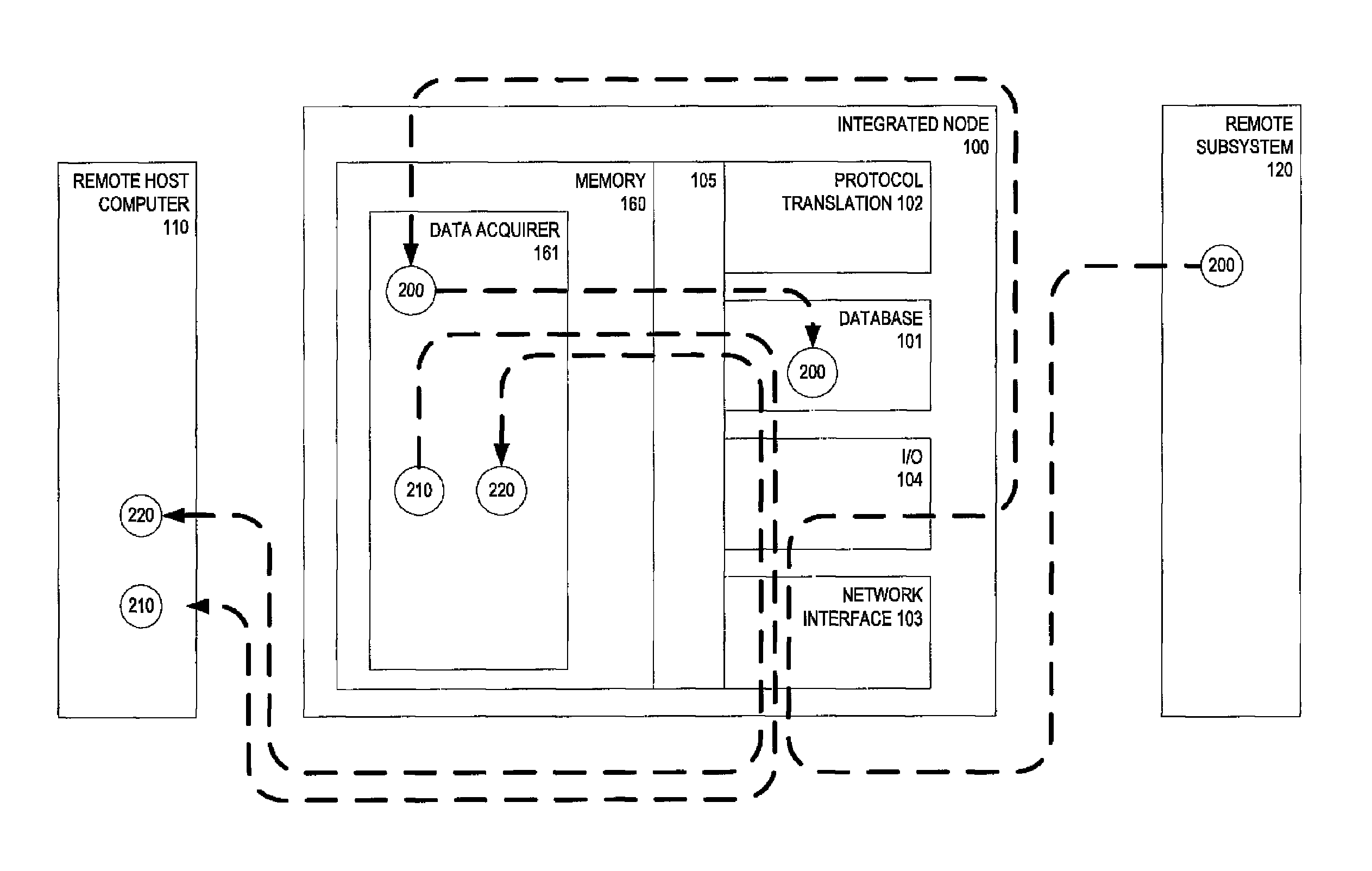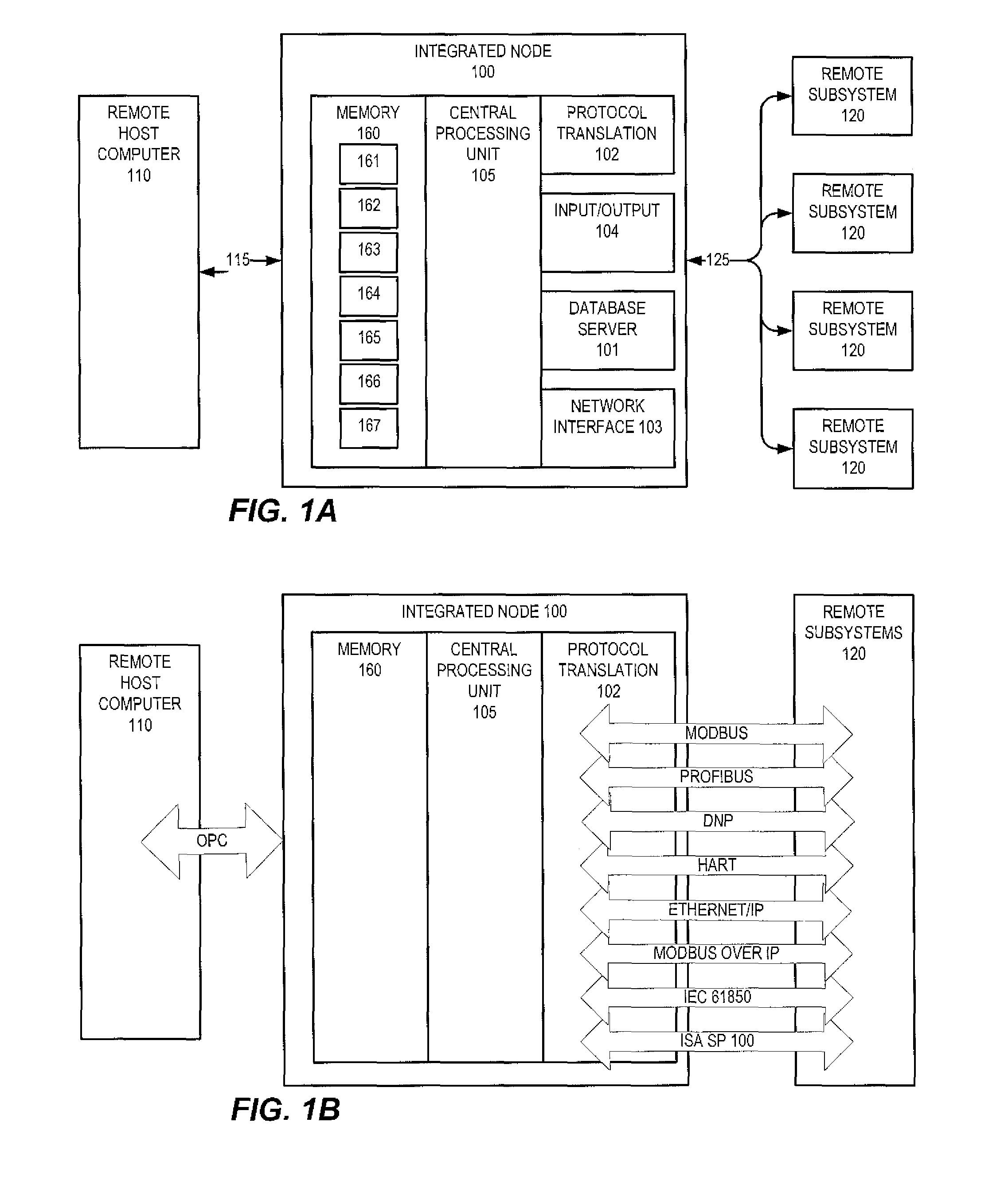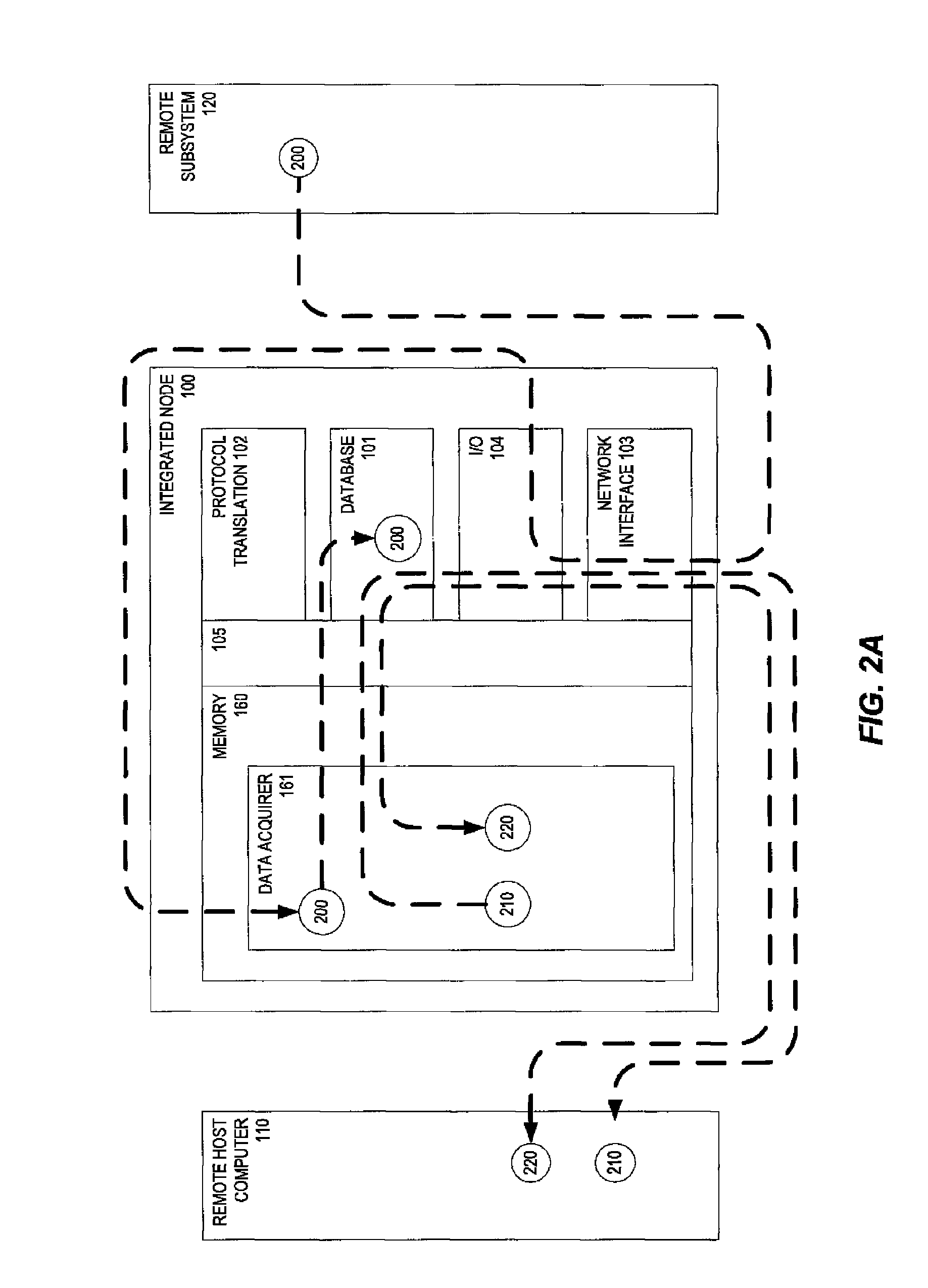Machines, computer program products, and computer-implemented methods providing an integrated node for data acquisition and control
a technology of data acquisition and control, applied in the field of automatic industrial processes, can solve problems such as data collection conflict between captured data and host data, undesirable risk of data collection conflicts, and low tolerance for network and host failures
- Summary
- Abstract
- Description
- Claims
- Application Information
AI Technical Summary
Benefits of technology
Problems solved by technology
Method used
Image
Examples
Embodiment Construction
[0044]An embodiment of an integrated node 100 can be shown, as illustrated in FIGS. 1A-1B, having a central processing unit 105 and a memory 160 to allow a remote host 110 to interface with a plurality of remote subsystems 120. Integrated node 100 is a programmable logic controller (PLC), meaning any programmable logic controller (PLC), remote terminal unit (RTU), PLC with RTU functionality, RTU with PLC functionality, or any type of computer, terminal, server, system, node, or unit or other machine as understood by those having skill in the art that can incorporate PLC or RTU functionality or both. The integrated node can be constructed to withstand indoor and outdoor conditions, with an operating environment in a range of about 10 to 35 degrees Celsius, indoor, and about −20 to 70 degrees Celsius, outdoor. The integrated node 100 is connected to any of the remote host computer 110 or remote subsystems 120 by way of communication links 115 and 125, respectively, as will be understo...
PUM
 Login to View More
Login to View More Abstract
Description
Claims
Application Information
 Login to View More
Login to View More - R&D
- Intellectual Property
- Life Sciences
- Materials
- Tech Scout
- Unparalleled Data Quality
- Higher Quality Content
- 60% Fewer Hallucinations
Browse by: Latest US Patents, China's latest patents, Technical Efficacy Thesaurus, Application Domain, Technology Topic, Popular Technical Reports.
© 2025 PatSnap. All rights reserved.Legal|Privacy policy|Modern Slavery Act Transparency Statement|Sitemap|About US| Contact US: help@patsnap.com



